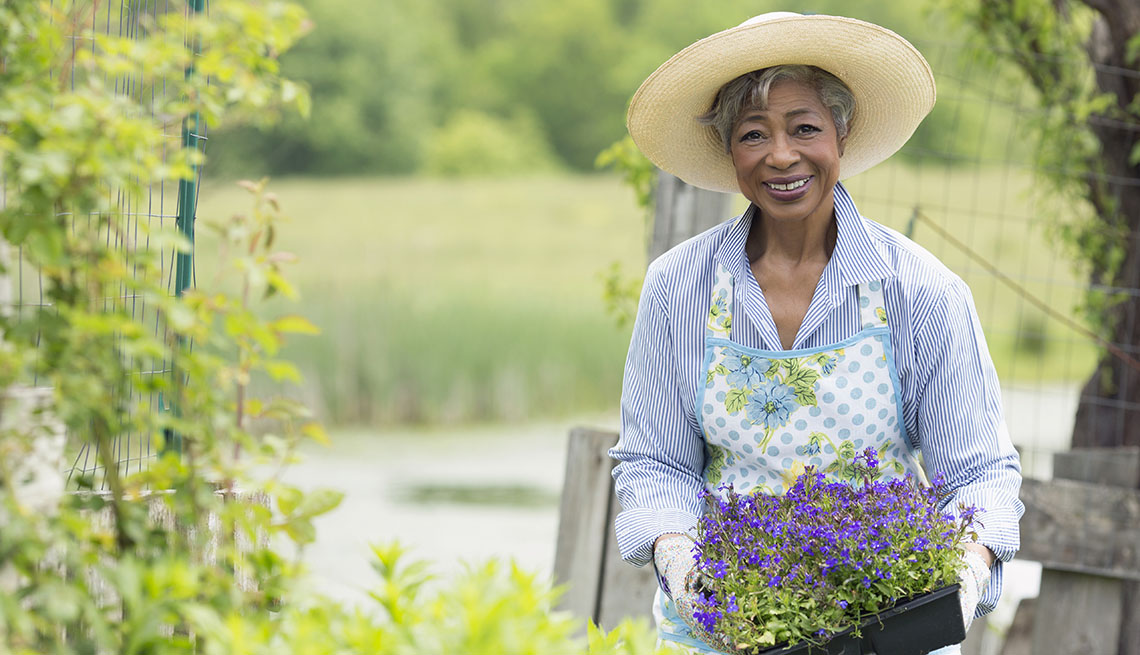New to Gardening? Unlock the Secrets with our Newbie Gardening Tips
Wiki Article
From Novice to Eco-friendly Thumb: A Step-by-Step Trip Via the Art of Gardening
Understanding Your Horticulture Space
To begin your horticulture trip, it is crucial to understand the special characteristics and restrictions of your horticulture space. Are there any type of details challenges you may deal with, such as inadequate dirt quality or restricted water schedule? Understanding these elements will certainly aid you make educated decisions regarding the kinds of plants that will certainly grow in your space.Think about the dimension of your horticulture location. You might require to concentrate on container gardening or vertical gardening to maximize your growing area if you have a small area. On the other hand, if you have a big area, you have the high-end of growing a selection of plants and developing various areas within your yard.
If your space is shaded, you can opt for shade-loving plants like hostas or brushes (newbie gardening). If your area obtains complete sun, you can grow a vast array of plants, consisting of natural herbs, vegetables, and flowers.
Lastly, take into consideration any kind of obstacles or restrictions particular to your space. You might need to modify it with compost or choose plants that are tolerant of less-than-ideal problems if your soil quality is bad. You can opt for drought-tolerant plants or implement water-saving strategies like mulching. if water is limited.
Selecting the Right Plants for Your Garden
Select plants that are well-suited to your garden's special problems and your personal preferences. When selecting plants for your yard, it is vital to consider aspects such as sunshine, soil kind, and climate. Some plants choose well-drained soil, while others prosper in wet or clay-like soil.It's likewise worth thinking about the maintenance level of the plants you choose. Some plants require more care and attention, while others are more low-maintenance.
Preparing the Dirt for Growing
First, analyze the problem of your soil to identify if any improvements or amendments are required. The high quality of your soil is essential for the success of your garden. Beginning by inspecting the structure of the soil. Is it sandy, fertile, or clayey? Sandy dirt drains quickly, while clayey dirt maintains water. Loamy dirt is the suitable balance between the 2. Next, check the pH degree of your soil. read the article Most plants prefer a somewhat acidic to neutral pH, around 6.0 to 7.0. You might need to readjust it using dirt changes such as lime or sulfur if your soil is also acidic or alkaline. Additionally, you need to take into consideration the nutrient web content of your soil. Conduct a dirt test to determine if any type of necessary nutrients are lacking. This will aid you choose which plant foods or raw material to add. Ensure that your soil is well-draining. Inadequately drained dirt can lead to waterlogged origins and other plant health and wellness concerns. Enhance water drainage by adding organic issue like garden compost or peat moss if required. By analyzing and making necessary changes to your dirt, you can develop an optimal atmosphere for your plants to prosper.Nurturing and Preserving Your Yard
Make sure to sprinkle your plants deeply, allowing the water to pass through the dirt and get to the roots. Routine weeding is likewise important to maintain your yard totally free from unwanted plants that compete for nutrients and room. Regularly evaluate your plants for any kind of indicators of infestation or health problem and take instant action to protect against additional damages.Troubleshooting Common Gardening Issues
To resolve common gardening concerns, start by determining the trouble and taking immediate action. One of one of the most common issues garden enthusiasts encounter is pests. If you observe eaten leaves or plants that are wilting for no evident factor, you may have an insect problem. Check your plants very closely for indicators of insects or other insects. If you identify any kind of, eliminate them by hand or make use of organic pest control methods. One more typical issue is nutrition shortage. weblink If your plants have actually yellow or blemished fallen leaves, they might not be obtaining enough nutrients. Think about feeding your soil or adding compost to improve its nutrient content. Overwatering is another concern that click now can damage your plants. You may be overwatering if you see water logged dirt or wilting in spite of sufficient watering. Adjust your watering schedule as necessary and ensure correct drainage. Condition can likewise impact your garden. It could be a sign of illness if you see spots, mold and mildew, or uncommon development on your plants. Eliminate impacted plants and treat the remaining ones with natural fungicides or pesticides. By quickly resolving these typical issues, you can make sure the wellness and success of your yard.Conclusion
Congratulations! You have efficiently finished the journey from newbie to green thumb in the art of gardening. By understanding your horticulture area, picking the right plants, preparing the dirt, and nurturing your garden, you have gotten rid of typical gardening issues like a pro. Now, equipped with expertise and experience, you prepare to take pleasure in the appeal and abundance of your flourishing garden. Maintain the wonderful job and remain to grow your green thumb!
When picking plants for your garden, it is important to think about elements such as sunlight, dirt kind, and climate. Some plants like well-drained soil, while others flourish in clay-like or wet soil (newbie gardening). By recognizing your horticulture room, picking the right plants, preparing the soil, and nurturing your yard, you have actually gotten rid of usual horticulture concerns like a pro
Report this wiki page